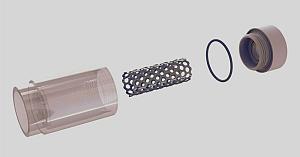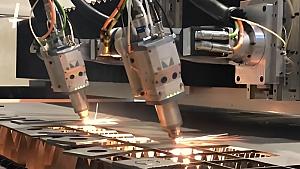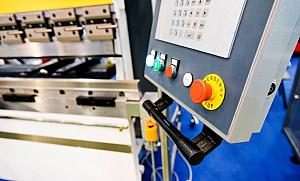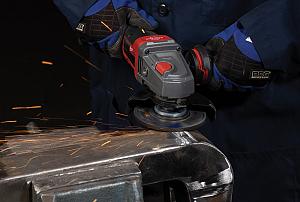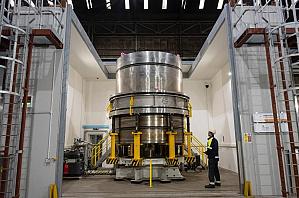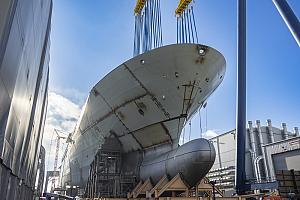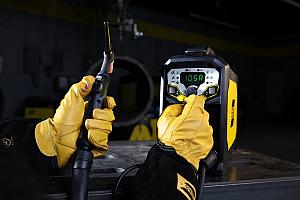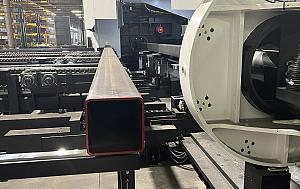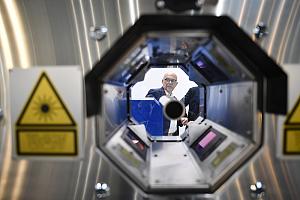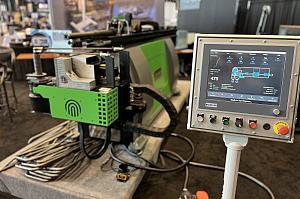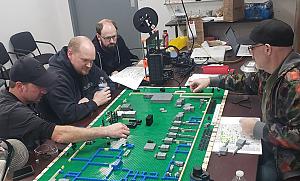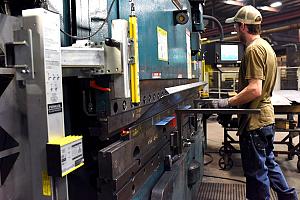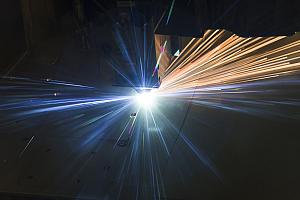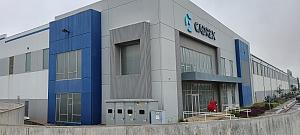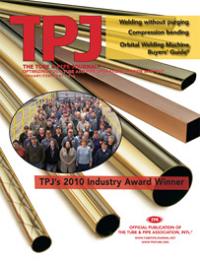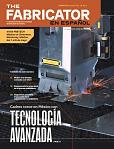Inspector
- FMA
- The Fabricator
- FABTECH
- Canadian Metalworking
Categories
- Additive Manufacturing
- Aluminum Welding
- Arc Welding
- Assembly and Joining
- Automation and Robotics
- Bending and Forming
- Consumables
- Cutting and Weld Prep
- Electric Vehicles
- En Español
- Finishing
- Hydroforming
- Laser Cutting
- Laser Welding
- Machining
- Manufacturing Software
- Materials Handling
- Metals/Materials
- Oxyfuel Cutting
- Plasma Cutting
- Power Tools
- Punching and Other Holemaking
- Roll Forming
- Safety
- Sawing
- Shearing
- Shop Management
- Testing and Measuring
- Tube and Pipe Fabrication
- Tube and Pipe Production
- Waterjet Cutting
Industry Directory
Webcasts
Podcasts
FAB 40
Advertise
Subscribe
Account Login
Search
No purge, no problem
Finding the right steps to purge the purge from P91 procedure
- By David Lucas
- January 6, 2010
- Article
- Arc Welding
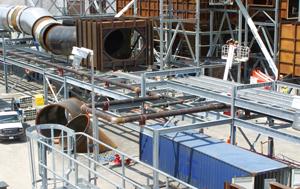
Figure 1The Gateway Energy and Coke Co. in Granite City, Ill., is a dual-use facility. It uses coal to produce coke for use in manufacturing steel, and the exhaust from this process produces steam to generate electric power. The main steam line, more than a half mile long, is made from P5B grade P91 material.
Many times a product that solves one problem creates a few others. Whether the product survives depends on whether its advantages—does it save time, reduce cost, improve quality?—outweigh its disadvantages. The P5B grade of P91, an alloy introduced in the late 1970s, is such a product.
The primary alloying elements in P91 steels are chromium, molybdenum, manganese, silicon, and vanadium (maximum 9.5Cr-1.05Mo-0.6Mn-0.5Si-0.25V),1 and this combination solved several problems for the power generation and petrochemical industries. This steel family is much more durable than competing alloys. It has good corrosion resistance rates and it withstands heat and pressure. However, it's not as easy to fabricate as other materials.
Fabricators had many concerns regarding cutting, joint preparation, preheating, welding, postweld heat treatment, weld quality, and safety. All of these issues translated into additional costs, so some contractors were leery about bidding a project with P91 pipe.The most common joining procedure for P91 is gas tungsten arc welding (GTAW), which requires an internal argon purge, followed by shielded metal arc welding (SMAW), which is time-consuming. Also, the amount of waste associated with these processes is considerable; rod stubs, slag left over from SMAW, and tungsten from GTAW are waste items that require disposal. Regarding safety, the hexavalent chromium level, in most cases, is greater than that allowed by the Occupational Safety and Health Administration (OSHA), so some type of respiratory filter device is required.
In the construction industry today,contractors strive to work more safely, with the lowest environmental impact, and keep costs down to stay competitive in the market. This isn't to say that the P5B grade of P91 is out of the running. However, making it a viable alternative does involve getting over a few hurdles.
Heat for Coke and Energy
Icon Mechanical, Granite City, Ill., is a contractor and fabricator that works in the power generation, petrochemical, and process piping industries. It was contracted to fabricate and install the mechanical portion of the Gateway Energy and Coke Co. project in Granite City (see Figure 1). This facility produces coke from coal to be used in the steel-producing industry; the exhaust from this process is used to make steam to produce electric power.
Equipped with 120 heat recovery ovens, Gateway has the capacity to produce 650,000 tons of blast furnace coke per year. A byproduct is approximately 500,000 pounds per hour of superheated steam, which is delivered to the adjacent U.S. Steel Granite City Works, where it is used in a cogeneration facility.
This project introduced a critical question: How do we weld P91 without purging a large area of pipe? Searching for the answer to this question gave two companies, Icon Mechanical and NuTec Inspection and Consulting, an opportunity to develop a welding procedure that has achieved an accelerated production rate for P91 with no need for an internal purge, a low welding repair rate, and low hexavalent chromium levels. Furthermore, it complies with the environmental impact guidelines set forth by Gateway's owner, SunCoke Energy.
Process Options
One option was to create a purge volume—sealing off a section of the pipe using water-soluble paper with water-soluble tape and introducing the purge gas with a needle of some type. The company elected not to pursue this option.
Another option resulted from an invitation to attend a welding machine demonstration at the Plumbers & Steamfitters Local 157 training facility (Terre Haute, Ind). The presentation centered on a machine intended to weld 300-series stainless steel without an internal purge. Available from Miller Electric Manufacturing Co., the machine uses a short-circuit GMAW process, Regulated Metal Deposition (RMD™). The RMD process creates a venturi action that pulls the external coverage gas through the weld puddle to give the internal weld puddle a backing purge. A hunch that this process would work on P91 proved correct.
The Devil Is in the Details
Developing a welding procedure specification (WPS) requires a combination of experience and experimentation; depending on the alloy and the application, it involves making changes in factors such as the welding processes, filler material, purge gas, and temperatures for the material before, during, and after welding. It was decided that an accomplished welder from the Pipefitters Local 439 (Caseyville, Ill.) would be employed to assist in the qualification of this procedure.
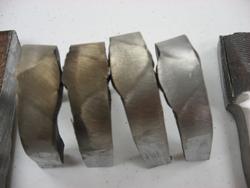
Figure 2Strap bends, required by ASME Sec. IX QW-160, determine the soundness and ductility of a groove weld joint.
It was determined that this material would require two processes: RMD followed by pulsed GMAW.
Finding the correct filler material was critical. Several brands of ER90S-B9 electrode wire are available. Finding one with the optimal chemical composition was the critical factor. The WPS developed for P5B uses a wire with the following percentages:
- C – 0.1060
- Mn – 0.7500
- Si – 0.3700
- P – 0.0080
- S – 0.0020
- Ni – 0.4700
- Cr – 8.9200
- Mo – 0.9900
- V – 0.1949
- Al – 0.0070
- Cu – 0.0400
- N – 0.440
- Ni+Mn – 1.2200
- Nb – 0.0630
- As – 0.0040
- Sn – 0.0030
- Sb – 0.0010
The purge gas is a 90/10 mixture of argon and carbon dioxide.
The interpass temperature is equally critical with P91. Testing determined that 675 degrees F optimized the welds' strength in the heat-affected zone (HAZ). Additional precautions were taken to monitor and restrict the heat input, which was measured 0.75 to 1.5 in. from the center of the weld. The temperature was monitored on a chart recorder used to comply with the ASME (American Society of Mechanical Engineers) B31.1 Power Piping Code. All ASME Section IX tests were conducted to qualify this procedure.
Faster, Safer, Greener
Reducing the costs associated with the time and materials needed to build a purge dam and purge the pipe volume would have made this procedure a success for two reasons. First, it saved time. The welder didn't have to build purge dams and wait for the purge gas to fill the pipe's volume. Second, it saved materials. The contractor didn't have to pay for water-soluble paper and tape or the purge gas.
However, these two reasons were just the tip of the iceberg.
The welding itself went more quickly than otherwise would be the case. The welding machine purchased for this project allowed switching between the two processes, RMD and pulsed GMAW, by pushing a button. Furthermore, these processes achieved a deposition rate approximately five times faster than GTAW followed by SMAW.
Other concerns included welder safety, environmental impact, and weld quality.
Safety. In keeping with Icon Mechanical's safety policy, a hexavalent chromium study was conducted at Icon and in the field. The OSHA "Small Entity Compliance Guide for the Hexavalent Chromium Standard" states the following concerning permissible exposure limits: an 8-hour time-weighted average exposure limit of 5 micrograms of Cr(VI) per cubic meter of air (5 g/m3). The study concluded that a ventilation system would prevent the hexavalent chromium level from exceeding the OSHA limit. This meant that the welders would not require respirators, making the welding environment both safe and comfortable.
Environmental Impact. Industrial processes result in scrap that must be disposed. The conventional P91 procedure uses GTAW and SMAW, which generate scrap in four ways: purge paper and tape for making the purge dam, tungsten electrodes, slag, and welding rod stubs.
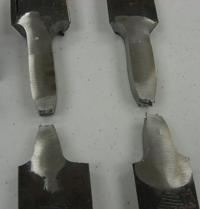
Figure 3Tensile coupons, required by ASME Sec. IX QW-150, determine the ultimate toughness of a groove weld joint.
The GMAW procedure uses microwire (0.035 to 0.045 in. thick) and an inert gas. Scrap includes approximately in. of wire that is clipped off before each start of a new pass.
Quality. Tests showed four bends to be acceptable (see Figure 2). During the tensile test the coupon pulled apart at 103,400 lbs. and 95,400 lbs. and broke in the base metal as is required (see Figure 3).
Upon completion, this project had a 98 percent acceptance rate.
About the Author
David Lucas
1350 Sycamore St.
Terre Haute, IN 47807
217-712-0639
About the Publication
Related Companies
subscribe now
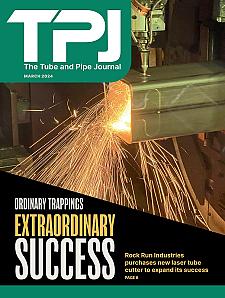
The Tube and Pipe Journal became the first magazine dedicated to serving the metal tube and pipe industry in 1990. Today, it remains the only North American publication devoted to this industry, and it has become the most trusted source of information for tube and pipe professionals.
start your free subscription- Stay connected from anywhere
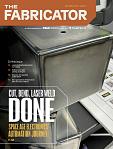
Easily access valuable industry resources now with full access to the digital edition of The Fabricator.
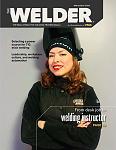
Easily access valuable industry resources now with full access to the digital edition of The Welder.
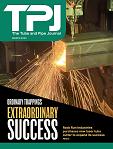
Easily access valuable industry resources now with full access to the digital edition of The Tube and Pipe Journal.
- Podcasting
- Podcast:
- The Fabricator Podcast
- Published:
- 04/16/2024
- Running Time:
- 63:29
In this episode of The Fabricator Podcast, Caleb Chamberlain, co-founder and CEO of OSH Cut, discusses his company’s...
- Trending Articles
Team Industries names director of advanced technology and manufacturing

3D laser tube cutting system available in 3, 4, or 5 kW
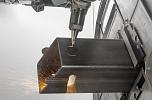
Corrosion-inhibiting coating can be peeled off after use
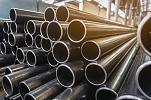
Zekelman Industries to invest $120 million in Arkansas expansion

Brushless copper tubing cutter adjusts to ODs up to 2-1/8 in.

- Industry Events
16th Annual Safety Conference
- April 30 - May 1, 2024
- Elgin,
Pipe and Tube Conference
- May 21 - 22, 2024
- Omaha, NE
World-Class Roll Forming Workshop
- June 5 - 6, 2024
- Louisville, KY
Advanced Laser Application Workshop
- June 25 - 27, 2024
- Novi, MI

